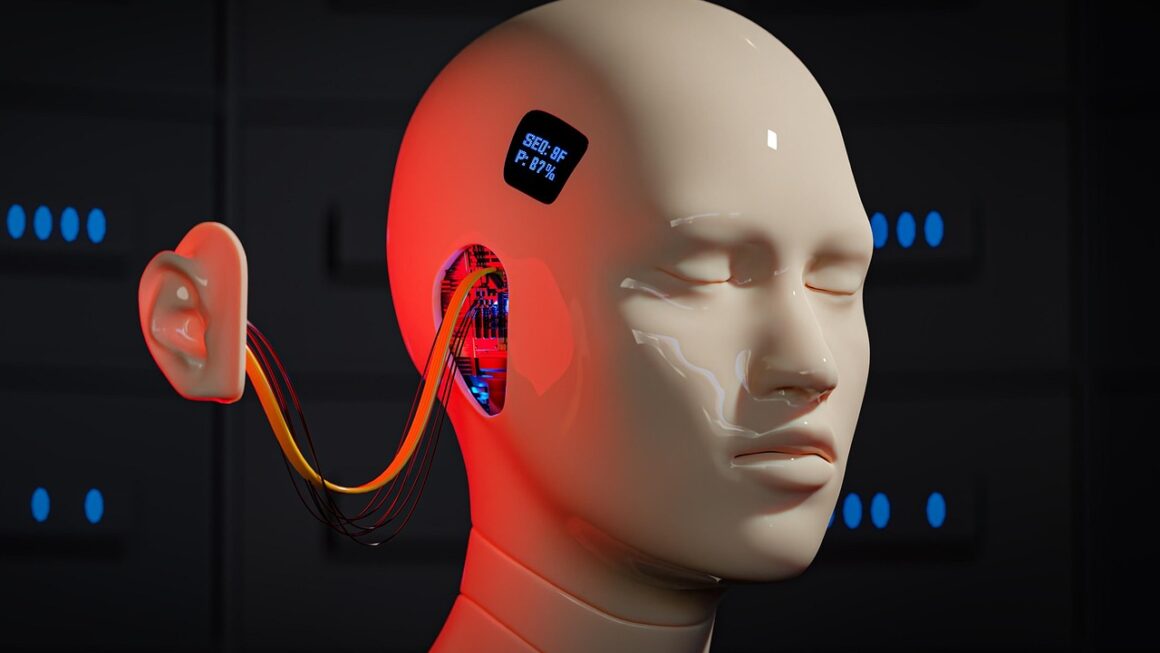Artificial intelligence (AI) is rapidly transforming industries and reshaping the way we live and work. From automating mundane tasks to driving groundbreaking innovation, the potential of AI seems limitless. This article delves into various AI use cases across different sectors, highlighting practical applications and the tangible benefits they offer. Whether you’re a business leader, a technology enthusiast, or simply curious about the future, this guide will provide valuable insights into the real-world impact of AI.
AI in Healthcare: Revolutionizing Patient Care
AI is poised to revolutionize healthcare, improving diagnostics, treatment, and patient outcomes. By leveraging machine learning algorithms and vast datasets, AI is helping healthcare professionals make more informed decisions and provide personalized care.
Diagnostics and Early Detection
AI algorithms can analyze medical images, such as X-rays, MRIs, and CT scans, with remarkable accuracy and speed. This capability assists radiologists in detecting diseases like cancer at early stages, significantly improving patient survival rates.
- Example: Google’s AI system, LYNA (Lymph Node Assistant), has shown promising results in detecting metastatic breast cancer in lymph nodes, surpassing human accuracy in some tests.
- Benefit: Faster and more accurate diagnoses, leading to earlier interventions and better patient outcomes.
Personalized Medicine
AI enables the development of personalized treatment plans tailored to individual patient characteristics, such as genetics, lifestyle, and medical history.
- Example: AI-powered drug discovery platforms can identify potential drug candidates by analyzing complex biological data, accelerating the process of finding effective treatments for specific diseases.
- Benefit: More effective and targeted treatments, reducing side effects and improving treatment success rates.
Robotic Surgery
AI-powered robots are enhancing surgical precision and minimizing invasiveness, leading to faster recovery times and reduced complications.
- Example: The da Vinci Surgical System, guided by surgeons, offers enhanced dexterity and visualization during complex procedures. AI is further being integrated to provide real-time feedback and improve surgical performance.
- Benefit: Reduced recovery time, smaller incisions, and improved surgical outcomes.
AI in Finance: Enhancing Efficiency and Security
The financial industry is embracing AI to streamline operations, detect fraud, and provide personalized financial advice.
Fraud Detection
AI algorithms can analyze vast amounts of financial data to identify suspicious transactions and prevent fraud in real-time.
- Example: Banks use AI-powered systems to monitor credit card transactions for unusual patterns, flagging potentially fraudulent activities for further investigation.
- Benefit: Reduced financial losses due to fraud and enhanced security for customers.
Algorithmic Trading
AI-powered trading algorithms can execute trades automatically based on predefined rules and market conditions, optimizing investment strategies and maximizing returns.
- Example: Hedge funds use AI algorithms to analyze market data, identify trading opportunities, and execute trades at high speed, often outperforming human traders.
- Benefit: Increased trading efficiency, reduced transaction costs, and improved investment performance.
Personalized Financial Advice
AI-powered chatbots and virtual assistants can provide personalized financial advice to customers, helping them manage their finances, plan for retirement, and achieve their financial goals.
- Example: Robo-advisors use AI algorithms to create and manage investment portfolios based on individual risk tolerance and financial objectives.
- Benefit: Accessible and affordable financial advice, empowering individuals to make informed financial decisions.
AI in Manufacturing: Optimizing Production and Quality
AI is transforming the manufacturing industry by automating tasks, optimizing production processes, and improving product quality.
Predictive Maintenance
AI algorithms can analyze sensor data from equipment to predict potential failures and schedule maintenance proactively, minimizing downtime and reducing maintenance costs.
- Example: Factories use AI-powered systems to monitor the performance of machines, detecting anomalies and predicting when maintenance is required.
- Benefit: Reduced downtime, lower maintenance costs, and increased equipment lifespan.
Quality Control
AI-powered vision systems can inspect products for defects with greater accuracy and speed than human inspectors, ensuring consistent product quality.
- Example: Manufacturing plants use AI-powered cameras to inspect products on the assembly line, identifying defects and removing them from circulation.
- Benefit: Improved product quality, reduced waste, and increased customer satisfaction.
Supply Chain Optimization
AI algorithms can optimize supply chain operations by predicting demand, managing inventory, and optimizing logistics, reducing costs and improving efficiency.
- Example: Retailers use AI-powered systems to forecast demand, optimize inventory levels, and route shipments efficiently, minimizing stockouts and reducing delivery times.
- Benefit: Reduced costs, improved efficiency, and enhanced customer satisfaction.
AI in Customer Service: Enhancing Customer Experience
AI-powered chatbots and virtual assistants are revolutionizing customer service, providing instant support and resolving customer issues efficiently.
Chatbots and Virtual Assistants
AI-powered chatbots can handle a wide range of customer inquiries, from answering frequently asked questions to resolving simple issues, freeing up human agents to focus on more complex tasks.
- Example: Many companies use chatbots on their websites and mobile apps to provide instant customer support, answering questions and resolving issues 24/7.
- Benefit: Improved customer satisfaction, reduced wait times, and lower customer service costs.
Personalized Recommendations
AI algorithms can analyze customer data to provide personalized product recommendations and offers, increasing sales and improving customer engagement.
- Example: E-commerce websites use AI-powered recommendation engines to suggest products that customers are likely to be interested in, based on their past purchases and browsing history.
- Benefit: Increased sales, improved customer engagement, and enhanced customer loyalty.
Sentiment Analysis
AI algorithms can analyze customer feedback from various sources, such as social media, surveys, and reviews, to identify customer sentiment and address potential issues proactively.
- Example: Companies use AI-powered sentiment analysis tools to monitor social media conversations, identifying negative feedback and addressing customer concerns quickly.
- Benefit: Improved customer satisfaction, enhanced brand reputation, and better product development.
Conclusion
AI is no longer a futuristic concept; it’s a present-day reality transforming industries and improving lives. From healthcare to finance to manufacturing, AI offers a wide range of applications that can drive efficiency, improve decision-making, and enhance customer experiences. As AI technology continues to evolve, we can expect to see even more innovative and impactful use cases emerge in the years to come. Embracing AI and exploring its potential is crucial for businesses and individuals alike to thrive in the increasingly AI-driven world. The key takeaway is to identify areas where AI can solve existing problems, improve processes, and create new opportunities for growth and innovation. The future is intelligent, and understanding AI’s capabilities is the first step towards building that future.




